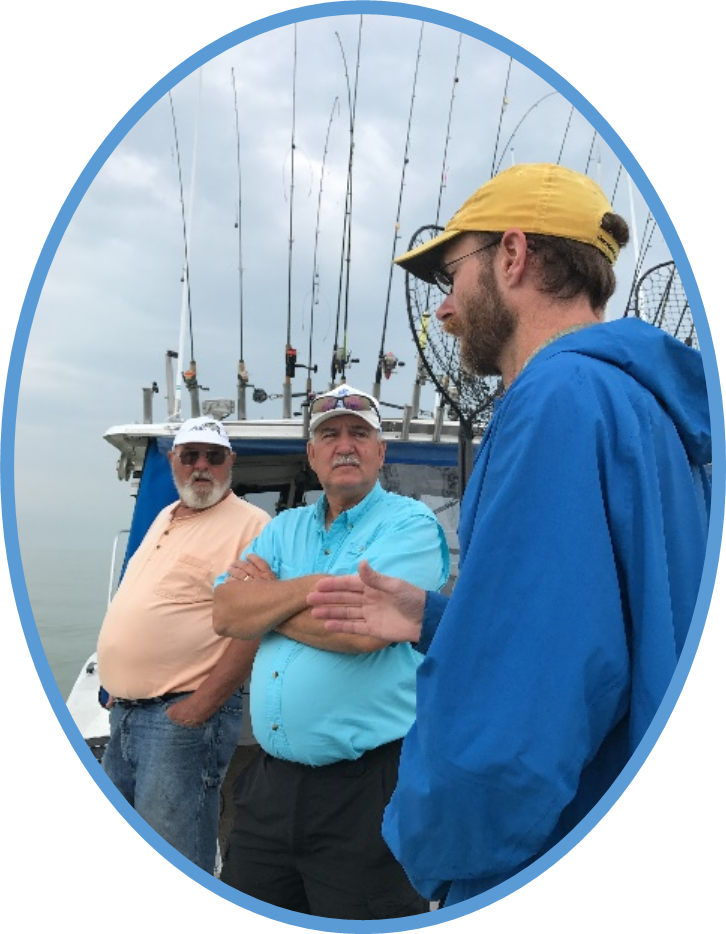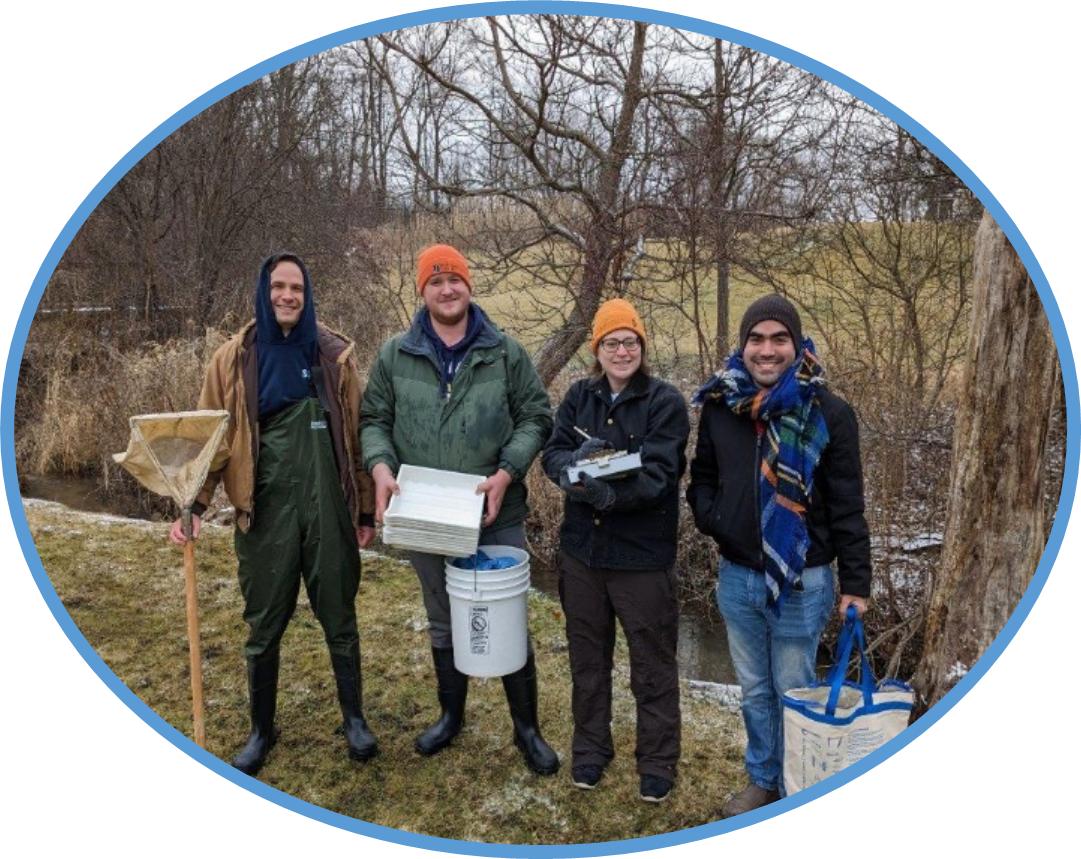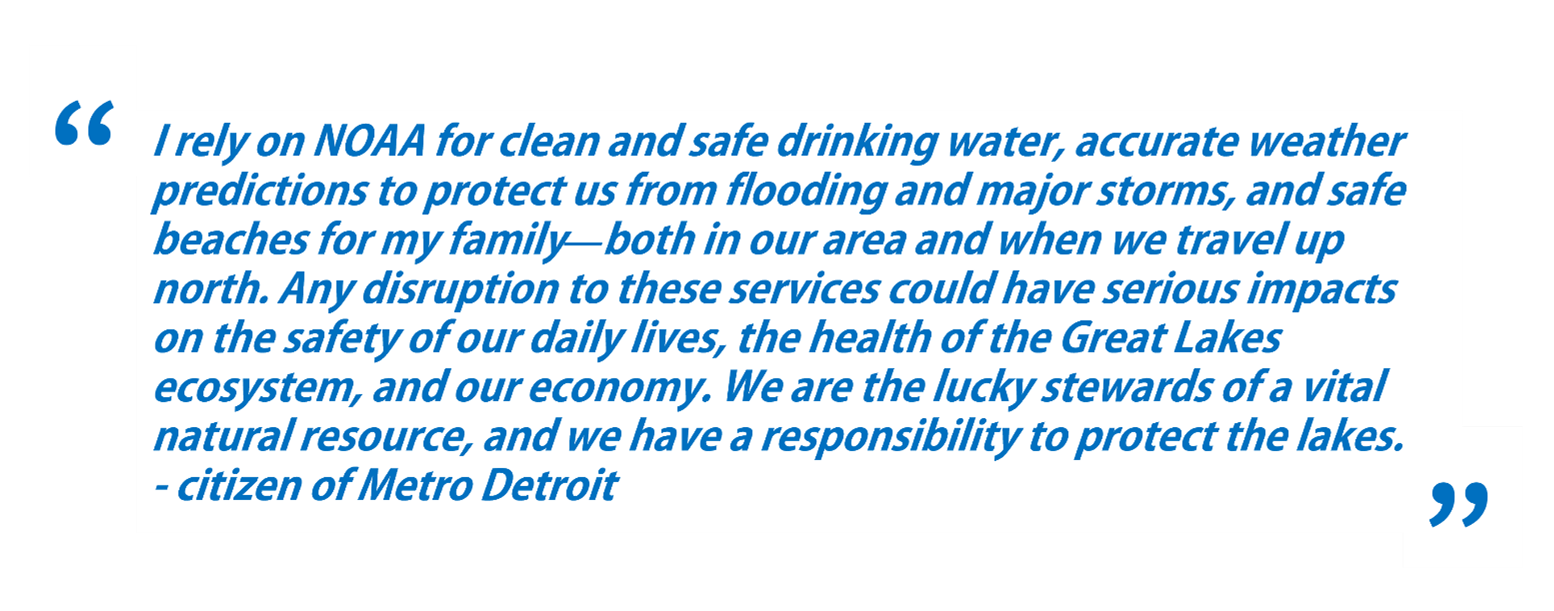The Great Lakes—Huron, Ontario, Michigan, Erie, and Superior—aren’t just bodies of water. They are home. They are history. They are economic engines and sources of recreation, drinking water, and identity for millions of people across the region.
A new resource Protecting NOAA Protects Our HOMES amplifies voices from across the Great Lakes basin, highlighting how research and forecasting from NOAA’s Great Lakes Environmental Research Laboratory (GLERL), the Cooperative Institute for Great Lakes Research (CIGLR), and partners directly support the daily lives of families, businesses, and communities.
Real Tools for Real People

Lake Erie Charter Boat Captains and NOAA GLERL (formerly CIGLR) scientist Dr. Mark Rowe discuss the 2017 Lake Erie harmful algal bloom, highlighting its impact on water quality, local fisheries, and the safety of recreational lake use.
NOAA’s work touches nearly every aspect of life in the Great Lakes region, helping keep people safe, supporting local economies, and preserving cherished experiences on the water. Families use NOAA forecasts to decide when it’s safe to swim. Water treatment operators depend on early warnings about harmful algal blooms to help protect public drinking water. Maritime professionals rely on real-time lake data to guide commercial shipping, fishing operations, and emergency response. Recreators like kayakers, anglers, and boaters plan their outings using NOAA’s weather and wave predictions.
As one Great Lakes visitor shared, having access to up-to-date lake conditions “helps us enjoy the lakes safely and responsibly.” Another noted that reliable data keeps people coming back to their favorite coastal communities, supporting local businesses, and preserving family traditions for future generations.
Why This Work Matters

CIGLR volunteers joined Friends of the Rouge, a nonprofit organization that raises awareness about the need to clean up the Rouge River in southeast Michigan, for a bug hunt—collecting aquatic insects that help reveal the health of the river. These hands-on efforts play a vital role in monitoring water quality and supporting community-based science.
The research led by GLERL, CIGLR, and partners delivers real-world value by tracking key lake conditions like changing water levels, harmful algal blooms, low-oxygen areas (hypoxia), and extreme weather events. This work helps ensure clean water, protects ecosystems, and strengthens the region’s economic stability and environmental health.
Beyond research, NOAA’s efforts focus on solutions: informing water safety, protecting aquatic life, and enabling better planning for communities and industries that depend on the lakes. Through strong partnerships with local organizations, GLERL and CIGLR also advance habitat restoration, environmental outreach, and education to build a more informed and resilient region.
CIGLR, hosted at the University of Michigan, collaborates with GLERL to unite federal scientists, academic institutions, nonprofits, and industry experts in service of the Great Lakes. It’s a powerful example of how science and collaboration come together to support the people and ecosystems that depend on these remarkable freshwater resources.
Get Involved
Whether you live near the Great Lakes or simply care about their future, your perspective matters. Help highlight the value of NOAA and Great Lakes research by sharing why this work matters to you. Take a moment to add your voice through this short questionnaire.
Want to hear what others across the Great Lakes are saying? Explore stories and perspectives from people who rely on this work every day.

Spanning two Great Lakes and connecting Michigan’s Upper and Lower peninsulas, the Mackinac Bridge is more than a marvel of engineering. It’s a vital link for communities, commerce, and culture across the region.



